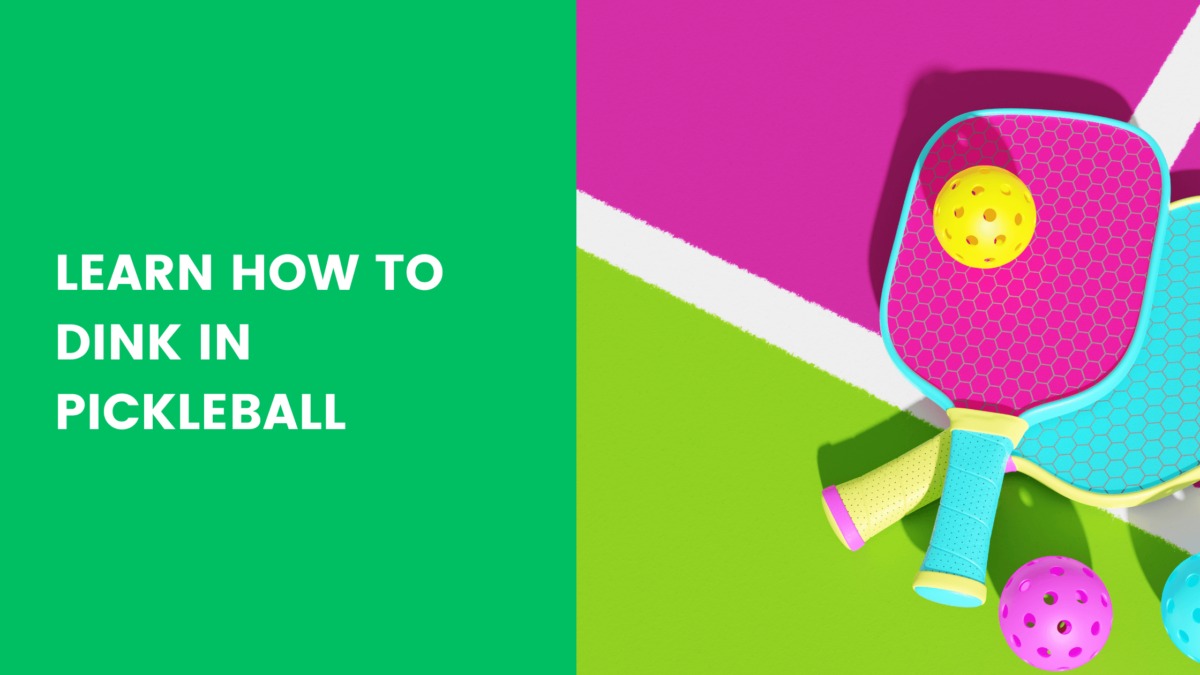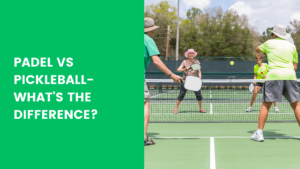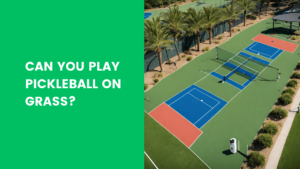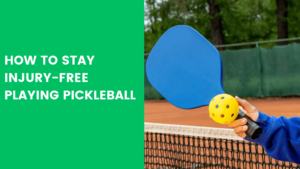Pickleball, hailed as one of the fastest-growing sports in the world, has captivated enthusiasts with its unique blend of athleticism and finesse. As players seek to elevate their game and outmaneuver opponents, mastering the art of dinking emerges as a pivotal skill set. In this comprehensive guide, we Learn How to Dink in Pickleball,we delve into the nuances of dinking, exploring its role in strategy, its techniques, and its profound impact on the dynamics of play. Whether you’re a novice looking to refine your technique or a seasoned player aiming to gain a competitive edge, unlocking the secrets of dinking promises to revolutionize your approach to pickleball.
Join us on this journey as we uncover the strategies and tactics essential to becoming a dinking maestro on the court.
Understanding Dinking-Learn How to Dink in Pickleball
In the lexicon of pickleball, “dinking” refers to the delicate art of hitting the ball softly over the net, placing it strategically within the opponent’s court. Unlike power shots, dinking involves finesse and control rather than sheer force.
The Basics of Dinking
To execute a successful dink, players must pay attention to their grip and stance. Holding the paddle with a relaxed grip allows for greater touch and finesse. Additionally, maintaining a low stance provides stability and better control over the shot. The angle and trajectory of the paddle are crucial in determining the placement of the ball, with slight adjustments capable of influencing the direction of the shot significantly.
Benefits of Dinking
Mastering the art of dinking confers several advantages on players. By keeping the ball low and close to the net, dinking enables players to maintain control over the game, dictating the pace and rhythm of play. Moreover, dinking can be an effective strategy against aggressive opponents, as it forces them to react to the soft shots rather than unleashing powerful returns.
Also read : How to Hit a Third Shot Drop Pickleball
Dinking Techniques
Dinking relies on soft touch and precise placement rather than brute force. Players should focus on gently guiding the ball over the net, using the paddle to impart minimal spin. By prioritizing placement over power, players can exploit gaps in their opponent’s defense and force them into difficult positions.
Practicing Dinking
Achieving proficiency in dinking requires dedicated practice. Solo drills, such as hitting against a wall or practicing volleys with a partner, can help players develop a feel for the ball and hone their control. Partner drills, where players engage in controlled rallies focusing on dinking exchanges, are essential for improving consistency and accuracy.
Common Mistakes to Avoid
In their quest to master dinking, players often fall prey to common mistakes. Over-hitting, or applying too much force to the shot, can result in the ball sailing out of bounds or into the opponent’s strike zone. Similarly, poor positioning, such as standing too far back from the net, can compromise the effectiveness of dinking shots.
Advanced Dinking Strategies
As players become more proficient in dinking, they can explore advanced techniques to gain an edge over their opponents. Adding spin to dinking shots can make them more unpredictable and difficult to return, while setting up for a put-away shot after a series of dinks can catch opponents off guard.
Dinking in Doubles Play
In doubles play, effective communication with one’s partner is essential when employing dinking strategies. Coordinating movements and covering the court efficiently can help teams maintain control over the game and neutralize their opponents’ attacks.
Developing Consistency
Consistency is key to success in pickleball, and dinking is no exception. Repetition in practice builds muscle memory and instills confidence in executing dinking shots under pressure. Additionally, maintaining mental focus and staying composed during rallies are crucial aspects of developing consistency.
Using Dinking to Control the Game
Dinking can be a potent tool for controlling the flow of the game. By varying the pace and trajectory of dinking shots, players can keep their opponents off balance and force them into making errors. Furthermore, dinking can be used strategically to tire out opponents and create openings for winning points.
The Role of Dinking in Winning Points
In pickleball, winning points often hinges on the ability to set up favorable situations through dinking. By patiently maneuvering their opponents around the court with well-placed dinks, players can create opportunities to deliver decisive shots and secure victories.
Dinking Etiquette
Despite its competitive nature, pickleball is a sport built on principles of respect and sportsmanship. Observing proper etiquette when dinking, such as acknowledging good shots from opponents and refraining from unsportsmanlike behavior, is essential for fostering a positive playing environment.
Adapting Dinking to Different Playing Styles
Dinking is a versatile technique that can be adapted to suit various playing styles. Whether playing defensively to neutralize opponents’ attacks or employing an offensive dinking strategy to pressure opponents into making mistakes, players should tailor their approach based on their strengths and the demands of the game.
Conclusion-Learn How to Dink in Pickleball
In the dynamic world of pickleball, mastering the art of dinking is essential for success on the court. By developing the skills and strategies outlined in this guide, players can elevate their game to new heights and enjoy greater success in their pickleball endeavors.
FAQs
- Is dinking only effective in doubles play, or can it be used in singles as well? Dinking is a versatile technique that can be utilized in both singles and doubles play. While it may be more prevalent in doubles due to the emphasis on teamwork and court coverage, singles players can still benefit from incorporating dinking into their strategy to control the pace of play and force errors from their opponents.
- How can I improve my consistency when dinking? Consistency in dinking comes with practice and repetition. Focus on maintaining a relaxed grip and a low stance, and pay attention to the angle and trajectory of your shots. Incorporating solo drills and partner drills into your practice routine can help build muscle memory and improve your dinking consistency over time.
- What should I do if my opponents consistently return my dinks with aggressive shots? If your opponents are consistently countering your dinks with aggressive shots, try mixing up the pace and trajectory of your dinking shots to keep them off balance. Additionally, focus on improving your court positioning and anticipation to better handle their returns and regain control of the rally.
- Are there any specific paddle grips that are recommended for dinking? While there is no one-size-fits-all answer to paddle grip preference, many players find success with a continental grip when dinking. This grip allows for greater versatility in shot selection and facilitates quick adjustments in paddle angle for precise placement.
- How can I incorporate dinking into my overall pickleball strategy? Dinking should be viewed as a complementary aspect of your overall pickleball strategy rather than a standalone tactic. Look for opportunities to mix dinks with other shots in your arsenal, such as drives and volleys, to keep your opponents guessing and maintain the upper hand in rallies.






Pingback: How To Hold Pickleball Paddle - All about pickleball